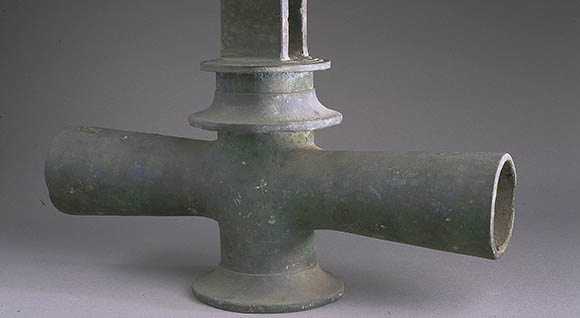Materials:
Bronze and lead
Dimensions:
184390: 12,7 x Ø 2,5 cm; 184382: 26,5 x. 21,7 x Ø 6,5 (max) cm; lateral pipes Ø4 cm; 69824: 24 x 30,4 x Ø11,3 (max) cm; 69821: 34,5 x 5,5 (max) cm
Setting:
Inv. 184390, 184382, 69824, 69821
Provenance:
Pompeii
Date:
First century AD
These objects, actual working taps for regulating the flow of water, are composed of three parts: the body, furnished with two lateral trunks which plug into the pipes; the tap, which is hermetically closed at the base; the cylinder with the flow hole passing through it from the top, that rotates allowing or blocking the flow of water, put into action with a key, usually rectangular or a large ring, like example number 184382. Exemplar number 69821 is still inserted in a length of lead pipe to which it is soldered. The production of this type of mechanism on the part of the collegia fabrorum had to correspond to precisely-fixed models, which we know through the work of Frontinus (first century AD), De aquae ductu urbis Romae. Numerous artefacts relating to the technology of the water systems of Pompeii, the presence of public fountains, nymphaea and fountains in private homes, and various bath complexes of the city, are all testimony to the high level of technology applied to this field. The great reservoir for distribution - the castellum aquae - with its triple internal partitions, provided for the furnishing of water to the various parts of the city.


